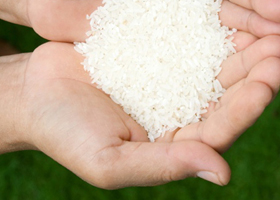So much food, so much waste
Author | Dr Karl Kruszelnicki
On average, we humans waste about 40 per cent of our food on its journey from the farm to our fork.
Worldwide, that works out to us humans losing or wasting about 1.3 billion tonnes of food each year. The trouble is that generating food is “expensive”. For example, in the USA, farmers use about 50 per cent of the country’s total surface area and about 80 per cent of their freshwater to make food.
Surprisingly, both the poor and the wealthy countries lose roughly the same amount of food per person per year — but for very different reasons.
In the poor countries the food is wasted at many stages. Sometimes it cannot be harvested, it cannot be transported to storage areas and it can spoil in storage areas before it gets to the markets. And of course a war (and poor countries have more than their fair share of wars) makes everything worse again.
In wealthy countries, it’s a slightly different story. One reason for the increasing wastage of food is the shift from a rural farming life to an urban non-agricultural life. Since 1974, the average American has increased individual food wastage by 50 per cent. We are becoming increasingly separated from our food. We don’t trust our noses any more to tell us when food has gone bad. Consumers are obsessed by the appearance of their fruit and vegetables, so the greengrocers have to throw out ‘imperfect’ produce. In the supermarket, sometimes the packages of food are too large for us to eat it all, again leading to wasted food.
Another source of food waste is labour shortage. On average, about 7 per cent of American planted fields are not harvested each year — ranging between 15 per cent for wheat, down to 2 per cent for potatoes.
Sometimes we let the food rot in the pantry or fridge, because we chose to eat in a restaurant, not at home. In restaurants we order huge meals, which we leave half eaten. In some upmarket restaurants, the kitchen cooks two identical meals for each customer — and then serves them the better-looking one and throws away the perfectly fine, but cosmetically less appealing, meal.
But wastage also happens in more down-market restaurants. For example, in McDonald’s, the unsold chips have to be thrown out after seven minutes, and the burgers after 20 minutes. About 10 per cent of all fast food is thrown out after it has been cooked.
Averaged out across the USA, Canada, Australia and New Zealand we waste about 52 per cent of our fruit and vegetables, 50 per cent of our seafood, 38 per cent of our grain products, 22 per cent of our meat and 20 per cent of our milk.
So food can be wasted all through the chain that begins on the farm, then goes through the harvest, packing, processing, and retail shops, before finishing in our family households.
In the US, wasted food makes up the single largest component of US municipal solid waste. As a result, decomposing uneaten food makes up about one quarter of US fugitive methane emissions.
But on the positive side, we can reduce the waste.
We can shop more wisely. We can learn to know when food has actually gone bad. We can buy fruit and vegetables even if they have tiny spots. We need better standardisation and clarification of date labels on food, so that we don’t throw out perfectly good food. We can cook only what we need — and if there is any left over, we can recycle the food into that prince of foods, the leftover.
The European parliament has designated the year 2014 as the “European Year Against Food Waste”, and has resolved to reduce food waste by 50 per cent by the 2020. The path that food takes from the farm to the fork has many inefficient steps, so we can get a lot of improvement with relatively little work — and we need to.
By the year 2050 the world’s population will be about 9 billion people. If we keep on wasting food at the same level as we do today, and if we want to feed everybody, we will have to produce 70 per cent more food. So if we stop wasting food, our job will be much easier.
This brings to mind the wonderful quote which has been attributed to (amongst others) Mahatma Ghandi: “Live simply so that others may simply live”. Or as your parents used to say: “Waste not, want not”.
For the audio version of this article, head to ABC Science.
Dr Karl Kruszelnicki is one of Australia’s most well recognised figures in science. A qualified medical doctor, engineer, physicist and mathematician, he appears on the list of the Top 15 Most Trusted Australians, and was named one of Australia’s National Living Treasures in 2012. He remains a hugely popular fixture on ABC radio across the country.
Dr Karl’s most recent release, 50 Shades of Grey Matter, is available at all good bookstores and online.







